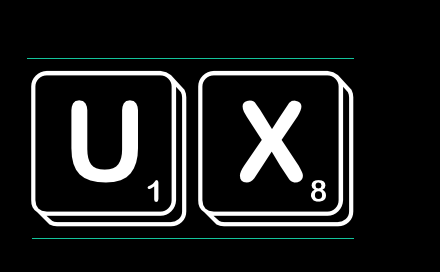UX
It’s one of those terms that techs and creatives talk about - and most of us avoid using in case we sounds like an imposter. But it sure as heck can impact a business – particularly a fledgling one, like ours where we’re trying to get people to try us out.
User eXperience is a discipline of its own, but it cosies up to UX Research (think a less structured and slower Familiarize) and UI. User Interface gets blurred with UX, much to the frustration of both; the former being more about the interface design of your product, web, mobile etc., the latter more about flow (man), helping the customer get what they want with the minimum fuss.
“UI is the saddle, the stirrups, & the reins. UX is the feeling you get being able to ride the horse.” — Dain Miller, Web designer.
Avoiding UX
I had thought my world-class Powerpoint skills, honed to Olympic standards at bp, would get me through this awkward phase where I have no actual product. I even stitched some slides together with some transitions and a voiceover (me) and exported it as a video. One of my ‘disagreeable giver’ friends described it as “utterly horrible”.
From here I went on the journey with Harleen to build my product, botching together a load of free/cheap tools like Airtable, Typeform, Stacker and Google Sheets. Cue even more horribleness.
And then I decided to bite the bullet and hire a developer to build the ruddy product.
But my wise, more experienced friend John told me what he was doing for his business – investing in the UX to nail down the customer journey, the branded experience, the workflow.
Very often, design is the most immediate way of defining what products become in people’s minds. — Johnny Ive, formerly Chief Design Officer of Apple Inc.
It’s blindingly obvious of course, but like many things, those damn trees stop you seeing the wood.
So I talked to a chap that did some great UX/UI (he’s confusingly both) at bp, and he’s agreed to help. But as soon as I started writing down what I wanted him to do, I realised I was doing it badly – I wanted to show him.
And this is where, yet again, life has got so much easier – and even cheaper - for the Bootstrapper. Because there are now incredible tools that a decade ago would have cost $$$ through Adobe with a horrible user experience (unless you’d trained to work their way).
There’s Figma, Balsamiq and my favourite Invision. I can export some designs from Sketch straight into Invision and through its (free) Studio (via some great video tutorials) I can build a clickable, animated prototype of my product. In 24 hours. Invision’s templates gave me a head start and I was away.
Whilst my expert UX/UI designer will doubtless sigh at my botched attempt to replicate his hard-won talent with 24 hours’ experience, what I’ve given him is so much closer to what I want than I could have written or even drawn. I can now employ his talents to make the UX zing, rather than trying to work out how it hangs together.
And all the time I’ve been building it, I’ve been thinking deeply about my customer, going over everything I’ve learned these past months, walking in their shoes – “Would Jonathan bother with that?” “Is that really what Erica needs right now?” “Will Nathan jump to that next step?”, “Will Patricia realise she’s saved time there?”
So, it’s to be recommended – for online and offline products, UX can make good ideas come alive and create ‘pull’ from customers. Think Apple. Almost no-one else gets close.
Here’s some things I’ve learned:
There are tools to draw the UX flow freehand – Invision has one – a purist would say diving into something designy like Sketch is a mistake – especially because I used a template which may have forced me down the wrong UX path. Given I have lived this product for the past six months, I felt I could skip this step - but it may come back to haunt me.
Get the UX in front of a customer asap – ideally watch them use it, noting where they (i.e. you) fail. Don’t interrupt them, but go back and ask lots of ‘why’ questions.
Try to get into the head of your customer and critically evaluate each step – how would they feel about this data, copy, navigation etc. Rather than what will they do.
Go fast – perfection is the enemy of done – these tools help you build something in a night; use them that way – you can always come back later to perfect. I’m irritated my product isn’t all branded, but I know that’s just my ego. It’s more important the UX works first for a customer, then I can introduce my colour palette and fancy font.
Investing in UX can reduce the time, cost and risk when you bring in the developers. The back-end becomes so much simpler to design if you’ve nailed your front-end.
I seriously recommend spending time on your UX. In fact these days, I don’t think we can get very far without it. And this doesn’t mean you have to have beautifully designed look and feel across your product and channels – that’s the UI which can come later.
Good luck! If you want to share tips on UX, get in touch - maybe I’ll even share what I’ve botched.





